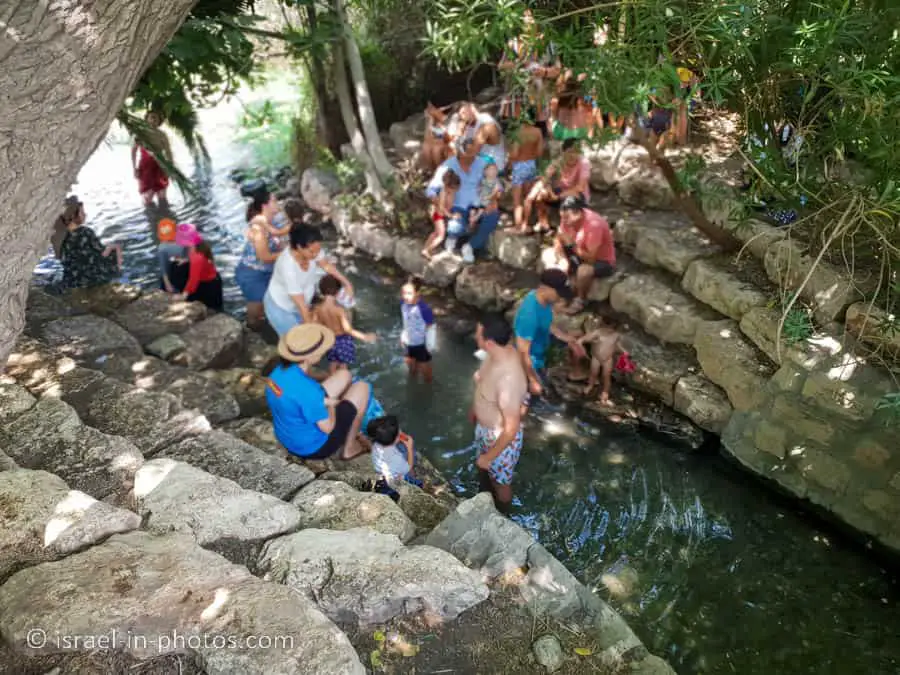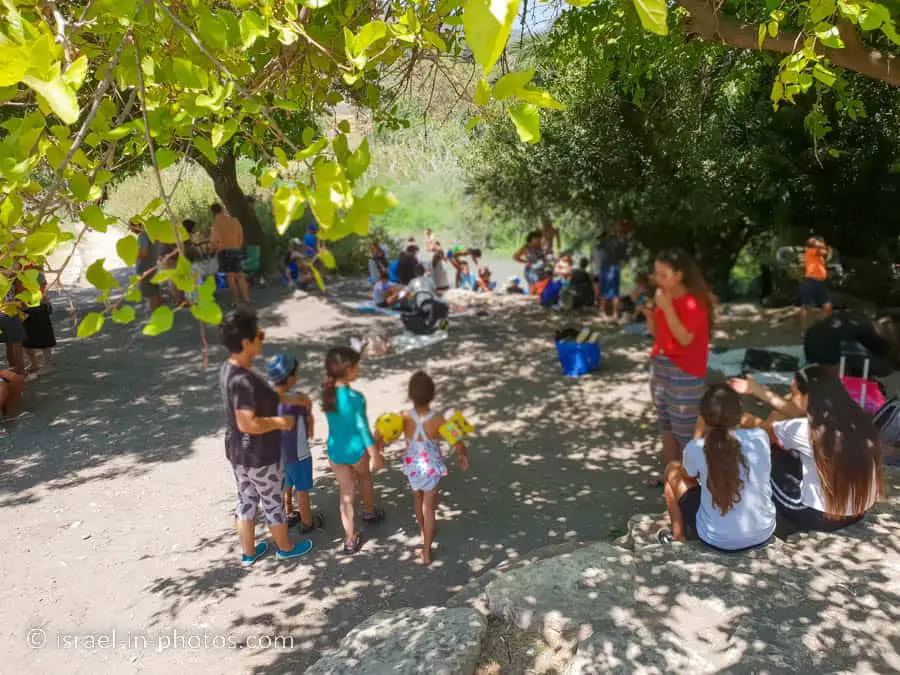Alroi Spring and Valley Railway Station – Visitors Guide
Near Kiryat Tiv’on and by the historical valley train line, you can find Alroi spring. And the spring is near the reconstructed railway station.
Table of Contents
Map
Alroi Spring and Alroi Railway station are located west of Kiryat Tiv’on, not far from the intersection of roads #6 and #70 (see additional map below). Here is an interactive map with links to the northern parking.
Directions for drivers: Link to Waze and Link to Google Maps
Directions for public transport: Link to Moovit
Interactive map of the area:
Parking
You can explore this area from the south or the north. As you can see from the following map, there are two free parking lots.
- The northern parking (called Alroi spring parking on Waze) is closer to the spring (about 330 meters).
- The southern parking (called Alroi railway station on Waze) is about 50 meters from the trains and 480 meters from the spring.

Both places are along the valley train promenade, and you can walk or cycle. If you are visiting both, it does not matter where to park unless you will be returning to the car during the visit.

Opening Hours
Always open.
Entrance Fee
Free.
Valley Train Promenade
We parked at the northern parking lot and headed towards Alroi spring. To reach the spring, follow the promenade to the south.

The promenade was built in 2015 by the Kiryat Tiv’on Local Council and includes a pedestrian trail, a cycling trail, rest plazas, and play equipment, and extends along part of the historic Valley Train line.
Follow the green signs to learn about the Hijazi Railway, which crossed borders and linked parts of the Middle East.
Follow the Brown signs to learn about the establishment of the Tiv’on Hills communities (Alro’i, Kiryat Haroshet, Kiryat Amal, and Tiv’on) and the people who transformed the oak-studded hills into a flourishing community – Kiryat Tiv’on.
The Valley Train Promenade links up with Nahal Kishon Park, where you will find additional pedestrian trails.
Source: sign

Along the promenade, you can find signs about Hijaz Railway. We will talk about it later in this post.

Alroi Spring
After a six-minute walk, we reached a train bridge. And to the right of it, you can find the spring.

The spring begins at the base of the bridge. This area is shaded and has shallow water. Thus smaller children prefer to be in this area.

Further to the west, the spring opens into a pool (as seen in the next photo).

The water level at the pool is about chest level. Also, mud is at the pool’s base, so I suggest wearing water shoes. And as seen in the next photo, the pool is not shaded.

Though it might look big, the whole place is not that large. And if I take several steps backward, you can see the number of people.

We visited on a weekday during the summer vacation. At 10:30, there were few families, but at noon this place was packed, and people constantly kept arriving.
It is a popular place, thus favor to visit early in the morning.

Food Truck – Coffee at the Alroi Spring
During our most recent visit, we did not see the food truck since it was a Tuesday. It usually operates at:
Wednesday – Friday: 10:00-18:00
Saturday: 09:00-19:00
The hours may change. Thus, before visiting, check the official Facebook page.
Alroi Railway Station
Since my youngest daughter was tired, we returned to the car and drove to the southern parking. And from the parking, you can see the trains.


Here are some of the rules:
- Starting a fire is forbidden.
- Climb only trains that have stairs and railings.

Jezreel Valley Railway
The Jezreel Valley railway, or the Valley Train, was a railroad that existed in Ottoman and British Palestine, reconstituted as a modern railway in Israel in the 21st century. It runs from the Mediterranean coast inland along the length of the Jezreel Valley. The historical line was a segment of the longer Haifa–Dera’a Line, a branch of the larger Hejaz railway.
The historical Haifa–Dera’a line was built at the beginning of the 20th century and connected the Port of Haifa with the main part of the Hejaz railway, the Damascus–Medina line. Like the entire Hejaz railway, it was a 1,050 mm narrow gauge line. The last stop of the Haifa–Dera’a line within the Mandate Palestine borders was at al-Hamma, today Hamat Gader. Planning and construction took four years. The railway was inaugurated on October 15, 1905, and regular services operated on it until 1948.
Despite several renewal attempts, the line lay dismantled for decades until 2011, when construction started on a large-scale project to build a new 1,435 mm standard gauge railway from Haifa to Beit Shean along roughly the same route as the historic valley railway. Israel Railways began passenger service on the new valley railway on October 16, 2016.
Source: Wikipedia

Jezreel valley railway started to operate in 1905. And following requests of the residents, a new station at Alroi was added. This station was operational from 1935 to 1952.
Note: if you love trains, see Railway Museum at Haifa.

Along the railway station, you can find many railcars. Most of them are closed.


By the railcars, you can find picnic tables.

Though many people visited the spring, the railway station was not packed. And there were available tables (in the shade and during lunchtime).


Summary
I am usually not a fan of small springs in nature. They are often overcrowded, loud, and not clean. But in this case, visiting both Alroi spring and Alroi railway station can be a good combo. You can start in the spring in the morning and then head to the station for a picnic. It will be an easygoing day that kids will enjoy.
This area has many attractions, and you can explore them using the interactive map above.
Have you visited Alroi Spring and Alroi Railway Station? Tell us in the comment below about your experience.
That’s all for today, and I’ll see you in future travels!
Stay Tuned!
Additional Resources
Here are several resources that I created to help travelers:- Trip Planner with Attractions and Itineraries is the page that will help you create your perfect travel route.
- What is the Best Time to visit Israel? To answer this question, we will consider the weather, prices, holidays, festivals, and more.
- Information and Tips for Tourists to Israel will answer the most common questions tourists have about Israel (including safety, passports, weather, currency, tipping, electricity, and much more).
- Israel National Parks and Nature Reserves include a complete list, top ten, map, tickets (Israel Pass, Matmon, combo), and campsites.
- If you are looking for things to do, here are the pages for Jerusalem, Tel Aviv, Haifa, Sea Of Galilee, Akko (Acre), Eilat, Nazareth, Safed (Tzfat), and Makhtesh Ramon.






